SIGED: Faculty Management System
This project presents the development of a temporary contract management software for faculty, as part of an integrative project. The system aims to optimize the control and planning of temporary hires, streamlining the management of contracts with varying durations and improving decision-making for future hires.
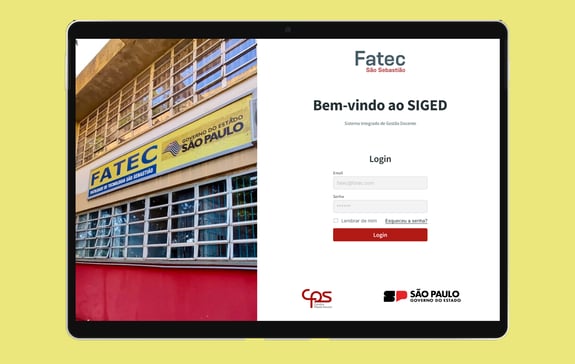

This case is a summary of a technical report. If you have time or would prefer to read the full version, click here.
Introduction
In light of the growing demand for professors at FATEC São Sebastião, particularly with the implementation of the Information Technology Management (ITM) course, it is essential to improve the administration of faculty contracts. Currently, the management of these documents relies on spreadsheets and manual records, which can lead to delays, inaccuracies, and data loss. To address these challenges, the development of a dedicated tool for contract management is proposed, ensuring greater efficiency and organization in the process.
The software will centralize the management of faculty contracts, offering features such as automatic expiration notifications, calendar integration, and secure access to information. In addition to reducing administrative workload, the platform will ensure compliance with the guidelines of the Paula Souza State Center for Technological Education (CEETEPS) and the General Data Protection Law (LGPD), providing greater reliability and security in academic management.
Methodology
This research, essentially a case study, delves deeply into the intricate dynamics of faculty contract management in higher education. By adopting a qualitative approach, we enhanced our understanding by focusing on the natural environment of the public institution on the coast of São Paulo as the primary source for data collection. Following the perspective of Raupp and Beuren (2006), we recognize that qualitative analysis provides a richer and more contextualized view, allowing us to uncover the underlying complexities of this social phenomenon.
The data collection method is outlined, combining bibliographic research, which includes sources like CAPES Journals and Google Scholar from the last five years, with interviews conducted with professionals involved in the daily management of these human resources. This holistic approach aims not only to enrich the research with a solid theoretical foundation but also to capture the perceptions and practical experiences of those who play a crucial role in contract management.
The software was designed to address gaps in faculty contract management, defining essential requirements based on consultations with managers and faculty members. The proposal was not limited to correcting existing problems but aimed to innovate by creating an intuitive and agile system capable of integrating into the institution's daily practices. Techniques such as interviews and process diagrams were used to ensure a comprehensive survey of the expected needs and functionalities.
The development followed an iterative approach, with frequent prototypes and collaborative meetings to incorporate ongoing feedback. This methodology ensured that the software was adaptable to emerging demands, providing greater efficiency, transparency, and security in the management of faculty contracts at FATEC São Sebastião.
Development
The software was designed to optimize the management of faculty contracts at FATEC São Sebastião, ensuring greater administrative efficiency. Its key features include the centralization of faculty information, notifications about contract expiration dates, scheduling views, and tracking weekly workload hours. Additional features, such as filters and table printing, were incorporated to enhance the user experience.
Development began in 2022 with the requirements gathering phase, using interviews and qualitative questionnaires to understand institutional needs. Based on this, system requirements were defined, and a use case diagram was created to facilitate communication within the team. The implementation took place throughout 2023, focusing on usability and streamlining administrative processes.
Design
After thoroughly identifying all the essential system requirements, we began the prototyping phase using the design platform "Figma." This tool was instrumental in creating the designs for all screens and workflows that would comprise the system. Within this platform, we developed designs for screens focused on the system's key functionalities. To optimize the centralization of information, we implemented a specific table for faculty data, with restricted access for the coordinator and administrative assistant. This screen incorporates a search bar and intuitive filters, facilitating the efficient location of desired information.
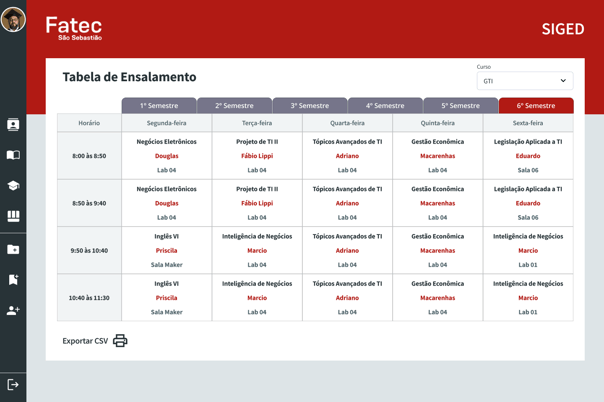
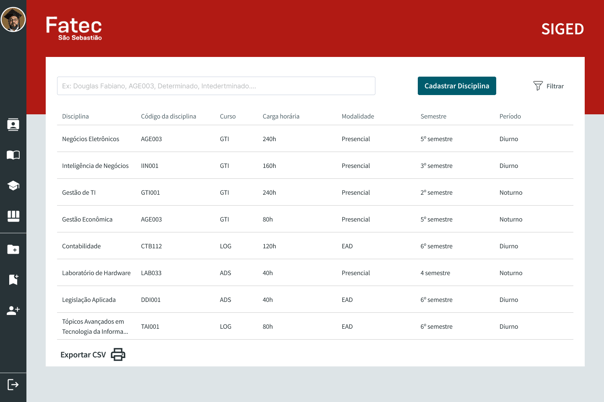
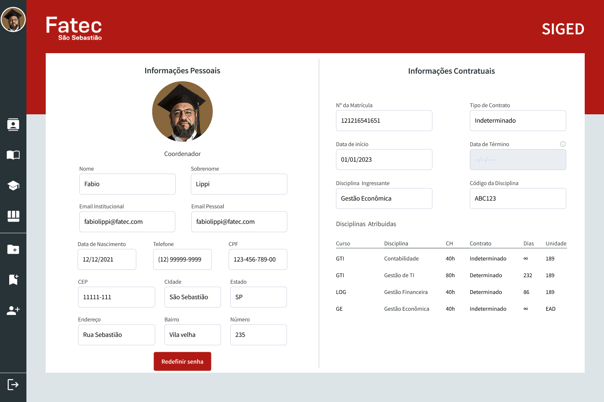
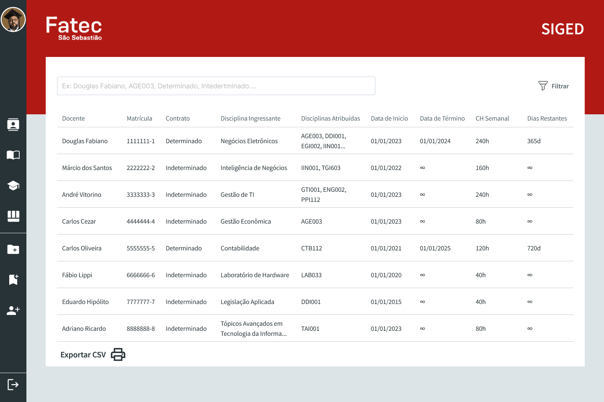




Technologies and Testing
The software was developed using Quasar, HTML, and SCSS for the frontend, ensuring an intuitive interface, while TypeScript, Vue3, and Firebase were used for the backend, providing robustness and scalability. Firebase also serves as the database, streamlining the storage and management of information.
Usability testing was conducted using the Marvel App platform, where users performed specific tasks to validate the system's intuitiveness and efficiency. This process allowed us to identify areas for improvement and enhance the user experience before the final implementation.
Challenges and Conclusion
During development, challenges arose in documentation and the creation of an intuitive interface. To overcome these, UX Design techniques and iterative testing were applied, ensuring a functional and accessible system.
The implementation of this software represents a significant advancement in faculty contract management, bringing increased efficiency and transparency. With its future approval, the tool is expected to optimize administrative processes and assist in the strategic planning of the institution.
